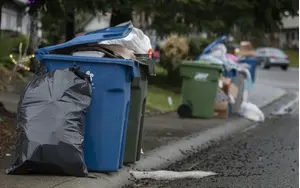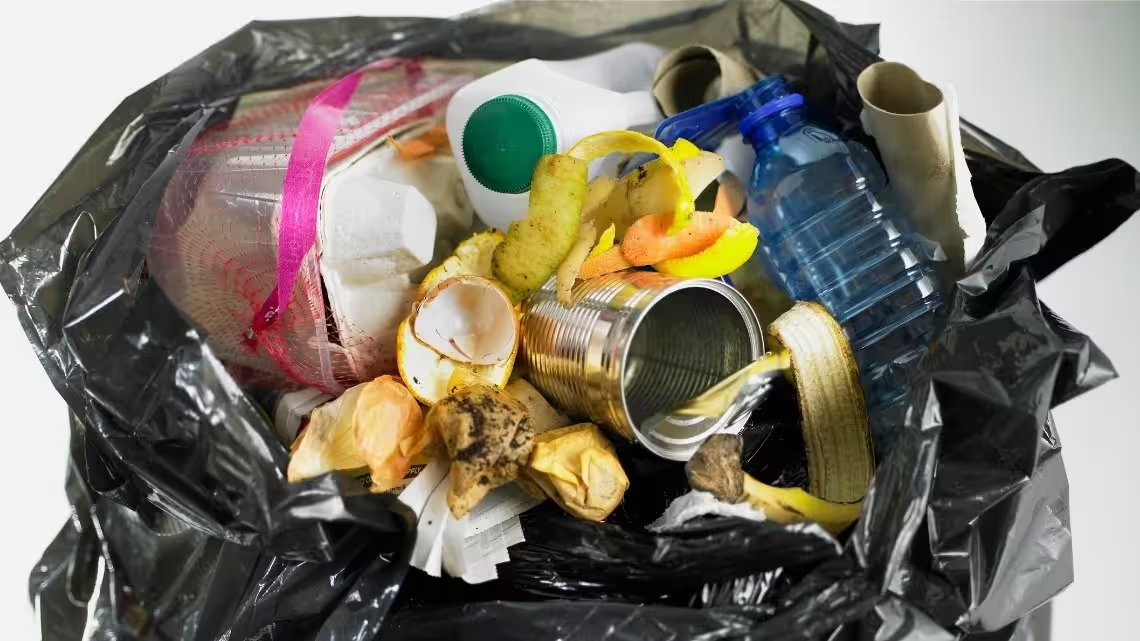Beyond Disposal: The Bright Side of Trash
Exploring Trash: From History to Solutions" is an informative article that delves into the world of trash. It covers a range of topics, including the history of trash, its environmental impact, types of trash, recycling and waste reduction efforts, innovations in trash management, and advice for responsible garbage disposal. The article reveals interesting facts about trash, such as the vast Great Pacific Garbage Patch, and emphasizes the importance of understanding and addressing the challenges posed by waste in our modern world. It offers a comprehensive overview for those seeking a deeper understanding of this everyday but often overlooked issue.
Waste Not, Want Not: The Creative Applications of Trash.

Trash is a ubiquitous part of our daily lives, but how much do we really know about it? It's more than just the waste we throw away. Trash encompasses a complex world of disposal, recycling, environmental impact, and even opportunities for innovation.
The History of Trash
Trash, as a concept, has been around for centuries. The earliest human societies disposed of their waste by simply leaving it in open areas. However, as societies grew and urbanized, more organized methods of waste disposal were required. In ancient civilizations like Egypt and Mesopotamia, waste was collected and buried in designated pits. The Romans had sophisticated sewer systems to manage both waste and wastewater.
The concept of recycling also has ancient roots. Metal, glass, and pottery were melted down and repurposed in various cultures. But as industrialization took hold, the volume and complexity of waste grew exponentially. Modern waste management was born in the 19th century when cities began creating organized collection systems and incinerators.

Types of Trash
Trash can be broadly categorized into several types:
- Municipal Solid Waste (MSW): This is the everyday waste generated by households and businesses. It includes paper, plastics, glass, metals, and organic materials.
- Hazardous Waste: This category includes substances that pose a threat to public health or the environment, such as chemicals, electronics, and medical waste.
- Electronic Waste (E-Waste): E-waste refers to discarded electronic devices, such as old computers, smartphones, and appliances. These often contain valuable and hazardous materials.
- Organic Waste: Organic materials like food scraps and yard waste can be composted, but when thrown in landfills, they produce harmful methane gas.
- Construction and Demolition Waste: This includes debris from construction and renovation projects, like concrete, wood, and drywall.
Environmental Impact
The environmental impact of trash is a growing concern. When waste is improperly managed, it can harm ecosystems, wildlife, and even human health. Key issues include:
- Landfills: Landfills are the most common method of trash disposal. They can leach harmful chemicals into the soil and emit methane, a potent greenhouse gas.
- Plastic Pollution: Plastics are a significant environmental concern due to their persistence in the environment. They can be found in oceans, rivers, and even in the food chain.
- Waste Incineration: Burning trash can release harmful pollutants into the air, contributing to air pollution and health problems.
Recycling and Waste Reduction
One way to mitigate the environmental impact of trash is through recycling and waste reduction efforts. Recycling allows materials to be reused, reducing the need for virgin resources and cutting down on pollution. Key points to consider include:
- Recycling Programs: Many communities have established curbside recycling programs. It's essential to understand what can and cannot be recycled in your area.
- Reduce and Reuse: Reducing waste at the source by consuming less and reusing items is an effective way to cut down on trash.
- E-Waste Recycling: Proper disposal of electronics is crucial. Many electronics contain valuable metals and hazardous materials that should be handled responsibly.
Innovations in Trash Management
As the world grapples with the challenges of trash, innovative solutions are emerging:
- Waste-to-Energy: Some countries are using advanced technologies to convert trash into energy through incineration or gasification processes.
- Biodegradable Plastics: The development of biodegradable plastics offers an alternative to traditional plastics that linger in the environment.
- Circular Economy: The concept of a circular economy focuses on reducing waste by reusing, repairing, and recycling products to keep materials in circulation for as long as possible.
Uses of Trash
Trash, often seen as a waste product, can have several surprising and innovative uses:
- Energy Generation: Some types of waste, such as municipal solid waste (MSW), can be burned to produce energy through waste-to-energy facilities. This process not only reduces the volume of trash but also generates electricity and heat.
- Recycling: Many items that end up in the trash, like paper, plastics, glass, and metals, can be recycled into new products, reducing the need for raw materials and conserving resources.
- Composting: Organic waste, including food scraps and yard debris, can be composted to create nutrient-rich soil amendments. This can improve soil quality and reduce the need for chemical fertilizers.
- Upcycling: Some creative individuals and organizations repurpose trash into useful and aesthetically pleasing items. For example, old tires can be turned into durable sandals, and discarded wooden pallets can be transformed into furniture.
- Art and Crafts: Trash can serve as an artistic medium. Many artists create stunning works of art from discarded materials, promoting both creativity and environmental awareness.
- Construction Materials: In some cases, reclaimed or recycled materials can be used in construction. For instance, recycled glass can be incorporated into concrete, and reclaimed wood can be used for building projects.
- Environmental Cleanup: Trash removal and recycling efforts play a vital role in cleaning up polluted environments, such as oceans, rivers, and public spaces.
- Fertilizer Production: Certain types of waste, like sewage sludge, can be processed to create nutrient-rich fertilizers for agricultural use.
- Waste-to-Biogas: Organic waste, when processed through anaerobic digestion, can produce biogas, a renewable energy source that can be used for heating or electricity generation.
- Educational Resources: Waste can be used as a valuable educational tool to raise awareness about environmental issues and promote responsible waste management practices.
- Landfill Gas Recovery: Some landfills capture the methane gas produced by decomposing waste and convert it into energy, reducing greenhouse gas emissions.

People also ask (FAQ)
What is an interesting fact about trash?
What makes up most trash?
How trash affects the environment?
What is the advice for garbage disposal?
What is the most common form of waste disposal?
How is waste disposal affecting us?
What is the cheapest method of disposal of waste?
Where is the biggest garbage dump on earth?
Interesting Fact About Trash:
One interesting fact about trash is that the Great Pacific Garbage Patch, located in the North Pacific Ocean, is a vast collection of marine debris, primarily consisting of plastics. It's estimated to be twice the size of Texas, making it one of the most significant trash accumulations on Earth.
What Makes Up Most Trash:
Municipal Solid Waste (MSW) typically makes up the largest portion of trash. This includes items like paper, plastics, glass, metals, and organic materials generated from households and businesses.
How Trash Affects the Environment:
Trash can have severe environmental consequences, including soil and water pollution from landfills, the release of greenhouse gases like methane, harm to wildlife due to ingestion or entanglement in plastic waste, and the disruption of ecosystems.
Advice for Garbage Disposal:
To manage garbage responsibly, consider reducing waste through conscious consumption, recycling materials when possible, composting organic waste, and using designated waste collection and disposal services in your area. Following local recycling guidelines is essential for proper waste disposal.
Most Common Form of Waste Disposal:
The most common form of waste disposal worldwide is landfilling. Landfills involve burying trash in designated areas, where it can decompose and potentially leach pollutants into the soil and groundwater.
How Waste Disposal Affects Us:
Inadequate waste disposal practices can affect human health by exposing communities to toxins and pathogens from improperly managed waste. Poor waste disposal contributes to air and water pollution, increasing the risk of respiratory and other health issues.
Cheapest Method of Waste Disposal:
Landfilling is often considered the cheapest method of waste disposal, as it requires less initial investment compared to other methods like recycling or waste-to-energy facilities. However, it comes with long-term environmental costs.
Biggest Garbage Dump on Earth:
The biggest garbage dump on Earth, in terms of marine debris, is the aforementioned Great Pacific Garbage Patch. It's not a traditional landfill but rather a vast area of the ocean where plastic and other waste have accumulated due to ocean currents. This area highlights the global issue of plastic pollution in the oceans.
Trash is a complex issue that touches on history, environmental concerns, and modern innovations. As responsible global citizens, it's crucial to understand the impact of our waste and strive for more sustainable waste management practices. From recycling and waste reduction to innovative solutions, we have the power to make a positive change in how we handle trash and its consequences on the environment



